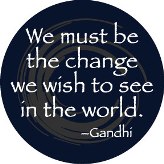Change management 

- Why organizations need to change?
- Why the management of change is important?
- Issues in the change management process.
- Making change management more effective.
- HR’s role in change management.
Why organizations need to change
Many things cause organizational change. These include:
- challenges of growth, especially global markets;
- challenge of economic downturns and tougher trading conditions;
- changes in strategy;
- technological changes;
- competitive pressures, including mergers and acquisitions;
- customer pressure, particularly shifting markets;
- to learn new organization behaviour and skills;
- government legislation/initiatives.
All organizations are in flux: changing their focuses, expanding or contracting their activities and rethinking their products and services. Most organizations more than ten years old look nothing like they did even five years ago. And it is likely that in the next year or two organizations will not look as they do today.
Change management matters because, although change is taking place at an ever-increasing pace, there is evidence that suggests that most change initiatives fail. For example, CIPD research suggests that less than 60% of re-organizations met their stated objectives which are usually bottom line improvement. This is consistent with other published research.
The impact of failures to introduce effective change can also be high: loss of market position, removal of senior management, loss of stakeholder credibility, loss of key employees.
One organizational response to change is that organizational forms are themselves evolving. Therefore, the change management response will have to be adaptive.
Change management matters because, although change is taking place at an ever-increasing pace, there is evidence that suggests that most change initiatives fail. For example, CIPD research suggests that less than 60% of re-organizations met their stated objectives which are usually bottom line improvement. This is consistent with other published research.
The impact of failures to introduce effective change can also be high: loss of market position, removal of senior management, loss of stakeholder credibility, loss of key employees.
One organizational response to change is that organizational forms are themselves evolving. Therefore, the change management response will have to be adaptive.
Issues in the change management process
A large number of issues have been identified as having negative impact on effective change management. Some of the key themes are identified below.

Organizational issues
Individual change initiatives are not always undertaken as part of a wider coherent change plan, for example through considering linkages between strategy, structure and systems issues. Therefore a change that considers a new structure but fails to establish the need to introduce new systems to support such a structure is less likely to succeed.
Lack of effective project management and programme management disciplines can lead to slippages in timings, in achievement of desired outcomes and in ensuring that the projects do deliver as planned.
Insufficient relevant training, for example in project management, change management skills and leadership skills can impact negatively on the effectiveness of any change initiative.
Poor communication has been linked to issues surrounding the effectiveness of change management in achieving effective change in various ways. For example, imposed change can lead to greater employee resistance (see section below also).
Finally, lack of effective leadership has been identified as an inhibitor of effective change.
Lack of effective project management and programme management disciplines can lead to slippages in timings, in achievement of desired outcomes and in ensuring that the projects do deliver as planned.
Insufficient relevant training, for example in project management, change management skills and leadership skills can impact negatively on the effectiveness of any change initiative.
Poor communication has been linked to issues surrounding the effectiveness of change management in achieving effective change in various ways. For example, imposed change can lead to greater employee resistance (see section below also).
Finally, lack of effective leadership has been identified as an inhibitor of effective change.
Individual/group resistance to change
Resistance to change can be defined as an individual or group engaging in acts to block or disrupt an attempt to introduce change. Resistance itself can take many different forms from subtle undermining of change initiatives or withholding of information to active resistance, for instance through strikes. Two broad types of resistance can be considered:
- Resistance to the content of change - for example to a specific change in technology or to the introduction of a particular reward system.
- Resistance to the process of change. This concerns the way a change is introduced rather than the object of change per se, for example, management re-structure jobs without prior consultation of affected employees.
Management need to be aware of these different criteria to ensure they respond appropriately.
Suggested reasons for resistance include: loss of control, shock of the new, uncertainty, inconvenience, and threat to status and competence fears. It is important to try to diagnose the cause of employee resistance as this will help determine the focus of effort in trying to reduce/remove the issue.
Suggested reasons for resistance include: loss of control, shock of the new, uncertainty, inconvenience, and threat to status and competence fears. It is important to try to diagnose the cause of employee resistance as this will help determine the focus of effort in trying to reduce/remove the issue.
Making change management more effective
From the issues raised in the section above it can be seen that change is complex and there is no single solution. However, a number of key areas of focus emerge.
Effective leadership is a key enabler as it provides the vision and the rationale for change. Different styles of leadership have been identified, for example coercive, directive, consultative and collaborative. These different styles may each be appropriate depending on the type and scale of change being undertaken. For example, when there is a large-scale organization-wide change a directive style has been identified as most effective.
Appropriate and timely training is frequently identified as key to effective change. Examples of learning and development requirements might include:
Effective leadership is a key enabler as it provides the vision and the rationale for change. Different styles of leadership have been identified, for example coercive, directive, consultative and collaborative. These different styles may each be appropriate depending on the type and scale of change being undertaken. For example, when there is a large-scale organization-wide change a directive style has been identified as most effective.
Appropriate and timely training is frequently identified as key to effective change. Examples of learning and development requirements might include:
- project and programme management skills to ensure change initiatives are completed both on time and to budget;
- change management skills, including communication and facilitation;
- leadership coaching.
Two-way communication with employees and their active involvement in implementation has also been identified as a key enabler of change. Active participation is one suggested means of overcoming resistance to change. Our recent research on mergers and acquisitions highlights the importance of senior leaders devoting attention to communication with employees during a time of transformation for the organization.
Seven areas of activity that make successful change happen - 'the seven c's of change':
Seven areas of activity that make successful change happen - 'the seven c's of change':
- Choosing a team.
- Crafting the vision and the path.
- Connecting organization-wide change.
- Consulting stakeholders.
- Communicating.
- Coping with change.
- Capturing learning.
HR’s role in change management
 People management and development professionals have a significant role to play in any change management process. HR’s involvement in various aspects of change can make the difference between successful and less successful projects by, for example, their:
People management and development professionals have a significant role to play in any change management process. HR’s involvement in various aspects of change can make the difference between successful and less successful projects by, for example, their:- involvement at the initial stage in the project team.
- advising project leaders in skills available within the organization – identifying any skills gaps, training needs, new posts, new working practices etc.
- balancing out the narrow/short-term goals with broader strategic needs.
- assessing the impact of change in one area/department/site on another part of the organization.
- being used to negotiating and engaging across various stakeholders.
- understanding stakeholder concerns to anticipate problems.
- understanding the appropriate medium of communication to reach various groups.
- helping people cope with change, performance management and motivation.
Organizational change is increasing, yet the high levels of failure indicate that effective management of these changes is still lacking. Such a gap indicates that there is much to learn about how to manage change more effectively. There is no single model of change and no single solution to effective management, but, as HR professionals are recognising, they need to ensure managing change is a core part of their role.
At present, HR professionals are not always seen as having the appropriate skills to lead on change management initiatives, and as a result may not be actively included within the change process. However, many of the issues that are identified concern the ‘people aspects’ of change and employee engagement. HR would therefore appear to be ideally placed to ensure such issues are appropriately and effectively addressed.
At present, HR professionals are not always seen as having the appropriate skills to lead on change management initiatives, and as a result may not be actively included within the change process. However, many of the issues that are identified concern the ‘people aspects’ of change and employee engagement. HR would therefore appear to be ideally placed to ensure such issues are appropriately and effectively addressed.